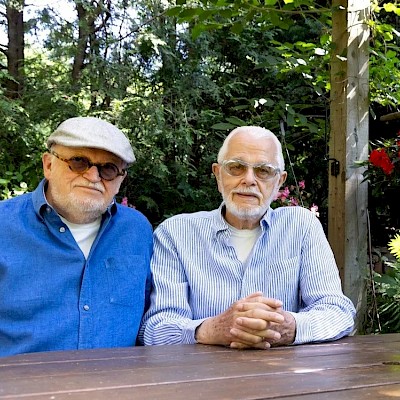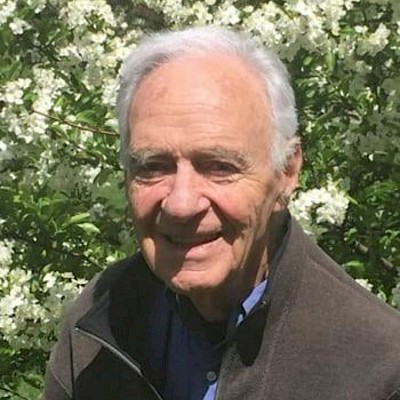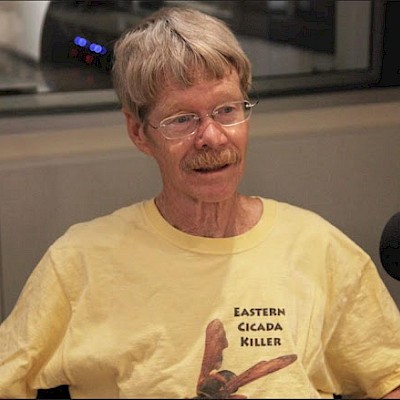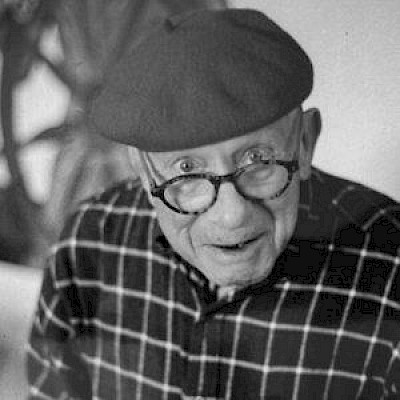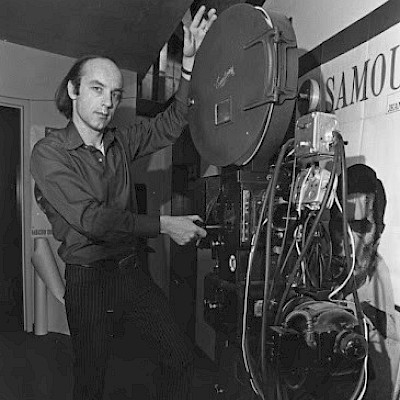
Tom Luddy
Known for his association with Francis Ford Coppola, Werner Herzog and many others, he was also a founder of the Telluride Film Festival.
om Luddy, a quietly influential film archivist and movie producer who was also a founder of the idiosyncratic Telluride Film Festival, died on Feb. 13 at his home in Berkeley, Calif. He was 79.
The cause was complications of Parkinson’s disease, said Julie Huntsinger, executive director of the Telluride festival, a half-century-old gathering of cinephiles held in a tiny former mining town in Colorado.
A transplant from the East Coast, Mr. Luddy landed in Berkeley in the 1960s, just in time to join the radical political activity that was afoot there, notably the Free Speech Movement that dominated the University of California campus in 1964.
He worked at the Berkeley Cinema Guild, a two-screen art house that had once been managed by the film critic Pauline Kael, after which he ran the Telegraph Repertory Cinema, another art-house theater, and joined the Pacific Film Archive, part of the U.C. Berkeley Art Museum, which he turned into a vital resource for film devotees and scholars.
By the early 1970s he was organizing as many as 800 programs there each year, from Preston Sturges retrospectives to programs of Russian silent films, new German cinema and movies from Senegal. He presented the United States premiere of Werner Herzog’s “Aguirre, the Wrath of God,” a Conradian tale starring Klaus Kinski as a Spanish conquistador who sets out to find a lost city in Peru, after it had been rejected by the New York Film Festival.
As director of special projects for Francis Ford Coppola’s company American Zoetrope, he produced movies like Paul Schrader’s “Mishima: A Life in Four Chapters” (1985), a complicated film about Yukio Mishima, the eccentric Japanese author who killed himself publicly in 1970 — a passion project that Mr. Schrader has described as “the definition of an unfinanceable project.” Mr. Luddy was its tireless booster and supporter, funding it early on with his American Express card.
In an email, Mr. Schrader described Mr. Luddy as “the big bang of film consciousness.”
He had a capacity for connecting artists to ideas, and to one another, that went beyond mere networking; it was a kind of vocation. The New York Times called him a human switchboard.
It was Mr. Luddy who suggested that Agnès Varda, the French New Wave filmmaker who was in Berkeley in the late 1960s, document the Black Panthers’ efforts to free the Panther leader Huey P. Newton from prison in 1968; her sobering portrait of the activists and their mission captured in two half-hour films is an urgent record of those fractious times.
When Laurie Anderson set out to make “Heart of a Dog,” her 2015 meditation on love and loss, and wanted to learn how to make an essayistic film, Mr. Luddy asked her to phone Philip Lopate, the film critic and essayist, for a tutorial.
It was a measure of Mr. Luddy’s influence, The Times noted in 1984, that he showed “The Italian,” a 1915 film that is considered a model for the immigrant-gangster epic, to Mr. Coppola before he made “The Godfather,” and “I Vitelloni,” Federico Fellini’s 1953 film about a group of young men on the brink of adulthood drifting about in a small Italian village, to George Lucas before he made “American Graffiti.”
And it was Mr. Luddy who introduced Alice Waters, his girlfriend at the time, to the work of Marcel Pagnol, the French filmmaker, in particular “Marius,” “Fanny” and “César,” the trilogy he produced in the 1930s about a group of friends finding their way in Marseille. That inspired the name of Ms. Waters’s restaurant Chez Panisse, the Berkeley institution that ignited the farm-to-table movement.
“We saw the films on three consecutive nights and I cried my eyes out, they were so romantic,” Ms. Waters recalled in a phone interview. “I knew I wanted to name the restaurant after one of the characters. We talked about Marius, Fanny’s lover, and Tom said, ‘Oh no, it has to be after that kindly man who married Fanny, and that was Panisse. And besides, he was the only one who made any money.’”
Chez Panisse would go on to global fame, but it remained Mr. Luddy’s dining room, where he could collect like-minded artists and watch the sparks fly. He and the restaurant also figured largely in a footnote to the moviemaking ethos of that decade, or at least of Mr. Luddy’s cohort, captured in an affecting short film by Les Blank called “Werner Herzog Eats His Shoe.”
As the story goes, Mr. Herzog challenged his fellow filmmaker Errol Morris to a bet, which was either a publicity stunt organized by Mr. Luddy or a genuine goad from Mr. Herzog: Mr. Herzog told Mr. Morris that if he succeeded in his seemingly quixotic mission to finish his first film, “Gates of Heaven,” a quirky, Gothic documentary about pet cemeteries, Mr. Herzog would eat his shoe. The movie was completed by 1978, and Mr. Luddy, Ms. Waters and Mr. Herzog set to work to honor the bet.
Ms. Waters decided, she said, that the best way to get the job done was to treat the shoe (a leather desert boot, actually) like a pig’s foot or a duck and braise it for hours in duck fat and herbs, which they did in her kitchen.
Later, at a screening of “Gates of Heaven” in 1979, Mr. Luddy played master of ceremonies as Mr. Herzog, with the aid of a pair of cooking shears, tackled his meal, which was laid out on a table on the theater’s stage. He bravely choked down a few bites, as did Mr. Luddy. Mr. Blank’s film is a touching, and very funny, ode to art-making, and also to the skillful machinations of Mr. Luddy.
In 1974, Mr. Luddy and a group of friends, Stella and Bill Pence and the film historian James Card, conceived a film festival to be held over three days in September in the picturesque former mining town of Telluride, Colo. (Bill Pence died in December.)
There would be no prizes, no angling for distribution, no marketing, no paparazzi and no red carpets — just an almost inconceivable amount of screenings, talks and shenanigans. They would show old films and new, local films and foreign, and art films as well as more popular fare, the offerings curated according to the organizers’ own appetites and interests. There would be guest curators from outside the film word, too, like Salman Rushdie, Don DeLillo, Rachel Kushner and Stephen Sondheim.
You might find Louis Malle at the bar, Robert Downey Sr. declaiming in the town’s plaza that plots were dead, Mr. Herzog and Barbet Schroeder playing table football. Mr. Lopate recalled that during the festival’s first year he found himself on an elevator with Leni Riefenstahl, the Nazi propagandist, and Gloria Swanson. The two women were trading health secrets involving sesame seeds.
“It mixes new directors and old ones — the venerable King Vidor is here this year — actors, distributors, scholars and the bristly and ardent society of film buffs,” The Times wrote in 1976. “Everyone is available to everyone else — names and no‐names, young and old — up to the point of exhaustion and past it.”
In 2016, A.O. Scott of The Times described the festival, then in its fifth decade, as “a gathering of the faithful, consecrated to the old-time cinephile religion,” adding: “The local school gym and a hockey rink on the edge of town are temporarily converted into what screening M.C.s unironically refer to as cathedrals of cinema. Everyone is a believer.”
Mr. Luddy might have been cinema’s most fervent believer, as well as its main officiant. The festival reflected his tastes, which were, as David Thomson, the San Francisco-based British film critic and historian, said, “both catholic and universal.” But, he added, “friendship was Tom’s art, really. He was unlimited in his wish and ability to help people in the broad area of film, and he did it without any ulterior motive, which is not common in the movie world.”
Thomas William Luddy was born on June 4, 1943, in New York City, and grew up in White Plains, N.Y., raised by staunch Democrats in what had been a monolithically Republican community. His father, William Luddy, who had worked in newspaper advertising and founded a national merchandise reporting service, was campaign manager for various candidates and, finally, chairman of Westchester County’s Democratic Party. His mother, Virginia (O’Neill) Luddy, was a homemaker and political volunteer.
At the University of California, Berkeley, Tom studied physics and then literature, graduating with a B.A. in English. He also ran a film society and played on the varsity golf team.
Mr. Luddy is survived by his wife, Monique Montgomery Luddy; his brothers, Brian, James and David; and his sister, Jeanne Van Duzer.
Although Mr. Luddy spent most of his time behind the scenes, he did appear in one movie: Philip Kaufman’s 1978 remake of “Invasion of the Body Snatchers,” in which he played to the creepy hilt one of the first humans to metamorphose into a pod person.
“Ah, the ubiquitous Tom Luddy,” The Times quoted a member of a film crew as saying in 1984. “It always seems like there were three or four of him!”
•
Remembering Tom Luddy
Use the form below to make your memorial contribution. PRO will send a handwritten card to the family with your tribute or message included. The information you provide enables us to apply your remembrance gift exactly as you wish.

